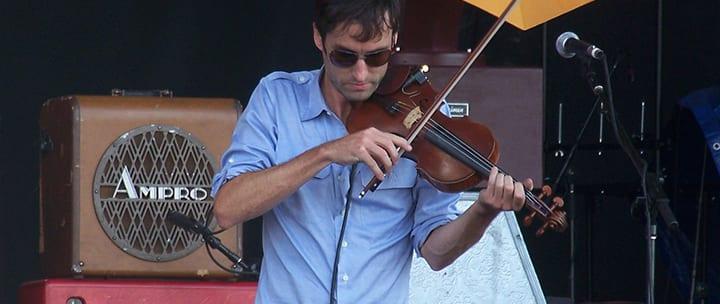 The violin can be an incredibly rewarding instruments to play. For beginners, the road to success is riddled with lessons in patience and discipline, but when met with enthusiasm and the right guidance, the journey is certainly worthwhile! Many say that practice makes perfect, and while of course regular practice is a must, it does not guarantee perfection – in fact, improper practice can yield consistently poor results. So what are the fundamental hallmarks of proper violin practice, and how can you use your practice time productively? In this article we’d like to shed some light in this area and take you through a few tips that are important for beginners to understand for improvement.
The violin can be an incredibly rewarding instruments to play. For beginners, the road to success is riddled with lessons in patience and discipline, but when met with enthusiasm and the right guidance, the journey is certainly worthwhile! Many say that practice makes perfect, and while of course regular practice is a must, it does not guarantee perfection – in fact, improper practice can yield consistently poor results. So what are the fundamental hallmarks of proper violin practice, and how can you use your practice time productively? In this article we’d like to shed some light in this area and take you through a few tips that are important for beginners to understand for improvement.
1. Private Violin Lessons
When learning to play the violin, the best place to start is by signing up for one-on-one violin lessons. Choosing a teacher is no easy task, but a few things to consider are the teacher’s:
-
Understanding of the violin’s mechanics
-
Knowledge of universal music and repertoire
-
Personal playing skills
-
Communication strength
Above all these characteristics, the most important thing to consider is the teacher’s understanding of the learning process – it must correlate with where you are as a student and your ability to learn. Naturally, private lessons are valued for their personal developmental qualities and progress, especially when it comes to younger students.
2. When and Where you Practice
Ideally, practicing the violin should be done in your personal “prime time,” when you feel most fresh and focused. For some this might be first thing in the morning; for others maybe it’s in the evening, right after school or work. Try following a routine that accommodates your natural energy peaks or dips. If, for example, you feel drained during a long practice session, try splitting your practicing into two shorter sessions. Whatever the case, make sure that you’re practicing consistently. Also, keep your environment – where you’re playing – in mind, as well. Make sure you’re in a quiet space that allows for minimal interruptions.
Check out these 25+ practice tips that will help you improve… fast!
3. Practice Accessories
Take a few moments to gather all the materials you may need before starting your practice session. This doesn’t just mean your music and violin – you may also want to set up your stand according to your preferred position (sitting vs. standing), as well as sharp pencil to mark tricky passages and fingerings. If you prefer to play the violin while seated, use a chair with sufficient support to assist your posture – slouching only leads to poor violin tone!
4. Practice Length
When it comes to your violin practice sessions, it’s less about how long you’re practicing for and more about what you’re achieving in each session. Sure, repetition of exercises can be helpful, but be careful that it doesn’t become mindless! Mindless practice can lead to the reinforcement of mistakes. Keep your practice sessions at a length that you can maintain concentration at – this way, quality will trump quantity, and that’s what your aim should be.
5. Get Limber
Improved violin playing, solid practice sessions, and core disciplines all work together. While warming up with exercises or scales and trills can begin to feel like a chore after a while, they’re crucial to strengthening your fingers before any proper playing can begin. Practice holding your bow before even picking up your violin – and when you do start practicing, ensure that you relax your bow hand in between exercises by vigorously shaking out tension without the bow in your hand.
6. Practice More Scales
You have two options when learning a new scale: academic or physical. The academic approach relies on you being comfortable with looking at the music, learning the signature key, and then figuring out the relative minor and major keys. The physical approach can be a little more exciting – it relates to feeling the occurring tones and semitones by observing the spaces between fingers. Either way, you should practice all scales slowly and in detail until there is no clumsiness.
Many people tend to rush through areas of difficulty; instead, learn how to play a challenging scale or piece slowly until you get it right, and then speed it up. Another tip is to try practicing scales in front of a mirror – this will help you simultaneously develop a few other techniques, like the correct arm positioning during shifts or wrist flexibility.
7. Games for Beginners
There are many bow exercises you can start doing to improve how you play the violin in terms of grip and posture, and many of them can be done without the use of a violin at all! This is one of our favorites:
Step 1: Hold the bow out horizontally in front of your body.
Step 2: Assume the proper bow hold.
Step 3: Start to alternatively push your first finger down, dipping the bow down a tad to the left.
Step 4: Now push your little finger down, dipping the bow down to the right.
Step 5: Try keeping your fingers bent while repeating this movement several times.
That’s it! Upon repetition you’ll start to experience the benefits of your newly-found finger strength, flexibility, and bow balance!
8. Listen to Yourself
It’s a good idea to record yourself while you practice playing the violin. Take time to consider areas that you are doing well in and areas that sound like they need improvement – for example, are you missing tones, or not quite getting the rhythm right? Recording your practice sessions also helps you document your development and gets you more comfortable with the idea of performance.
9. Listen to Others
To help you stay in tune, it’s important that you improve your ear by listening to the pieces you’re learning daily. You’ll need to hear how an accomplished violinist handles things like style, pitch, rhythm, and tone. By listening to these pieces daily, you will be developing your own ear. Worried you don’t have time? Simply make it a part of your daily routine – try listening to great violin music while you work out, cook, or during your commute.
As you do this, try to get in a variety of both passive and active listening. Passive listening includes the above, as well as going to inspirational concerts and live performances. Active listening, on the other hand, consists of listening to these pieces with your violin and bow in hand. While actively listening, you can work through details relative to tune. It’s important that you listen intently, to a point that you can hum, sing, or whistle the tunes precisely, identifying downbeats and timing with accuracy.
If you’re a beginner, we strongly recommend giving some of these tips a try for progress in the way you play the violin. Perfection won’t happen overnight, but productive practice will surely improve your skill over time.
Photo by Kate Wellington
Megan L.

